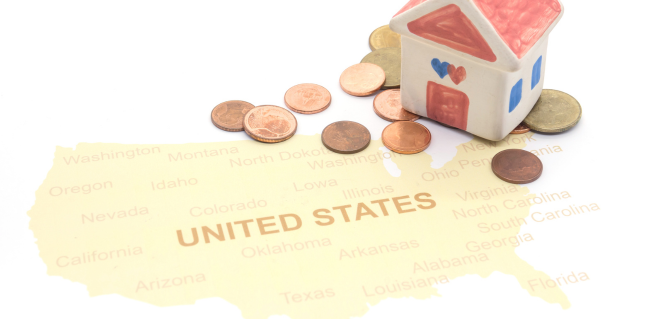Dr. Robert Dietz, Chief Economist of the National Association of Home Builders (NAHB), recently addressed the public affairs and communications committee at the fall leadership meetings in Palm Springs, California, sharing information on the US Housing Market. As an active member of NAHB, I am fortunate to chair public affairs for NAHB this year and have the opportunity to hear Dr. Dietz’s reports in person.
He provided a comprehensive view of the current U.S. housing market, offering crucial insights that can help stakeholders navigate the tumultuous market environment.
Here’s a breakdown of his key points:
1. Interest Rates and Economic Implications
- Expectations are set for a prolonged period of higher interest rates.
- The GDP is anticipated to experience a rolling recession. This means different sectors will feel impacts at varying times.
- Dr. Dietz acknowledged that his forecast on interest rates was slightly off. The current rates are 20 to 30 basis points higher than what he predicted about 6 to 7 months ago. (note: lots of economists missed this one.)
2. Current State of the Housing Market
- Contrary to previous assumptions that the peak was last November, we are currently at the peak rate for the housing market.
- The demand for housing has transitioned more toward outer suburbs and exurbs.
- The homeownership rate, currently at 66%, is expected to decline. This begs the question: who is increasingly being priced out of the market?
- Single Family Built-to-Rent (SF BTR) makes up only 10% of housing starts, with institutional ownership standing at 1.4 million nationally. This is minuscule compared to the overall housing stock.
3. Strategies and Impacts
- Building more affordable housing is crucial. According to Dr. Dietz, it’s one of the most effective strategies to counter inflation.
- He attributed the high interest rates to several factors: the federal deficit, the FED’s decision to hike rates, Fitch’s move to downgrade America’s credit rating, and the aftermath of the vast amounts of stimulus money released during the pandemic.
4. Future Predictions
- Housing is predicted to experience a favorable period towards the middle to end of 2024. And the period from 2025 to 2030 looks promising for home building.
- If consumers get into trouble, watch for a surge in auto loan delinquencies, with many of these being high-interest-rate loans. If this hits the headlines, it would suggest that consumers will slow spending.
- Remodeling will continue to expand. The remodeling market share of housing construction activity grew from 31% to 42% from 2003 to 2022. The long-term forecast predicts this number to rise even further, reaching 50%, excluding DIY projects.
- The housing deficit in the U.S. stands at a staggering 1.5 million. Taking into account young adults living with their parents, this figure might be closer to 4 million.
- The shortage of lots is predicted to intensify in 2024 and 2025. Currently, A&D loans for land development stand at a 12% interest rate.
While there are challenges facing the housing sector, Dr. Dietz’s insights offer a roadmap for navigating them. His emphasis on affordable housing, understanding of economic intricacies, and forward-looking predictions provide stakeholders with the information they need to make informed decisions.
Additionally, NAHB is set to unveil a new housing affordability index in 2Q24, which will feature 1Q24 data. This will be an interesting metric to follow. Can’t wait to see it!
